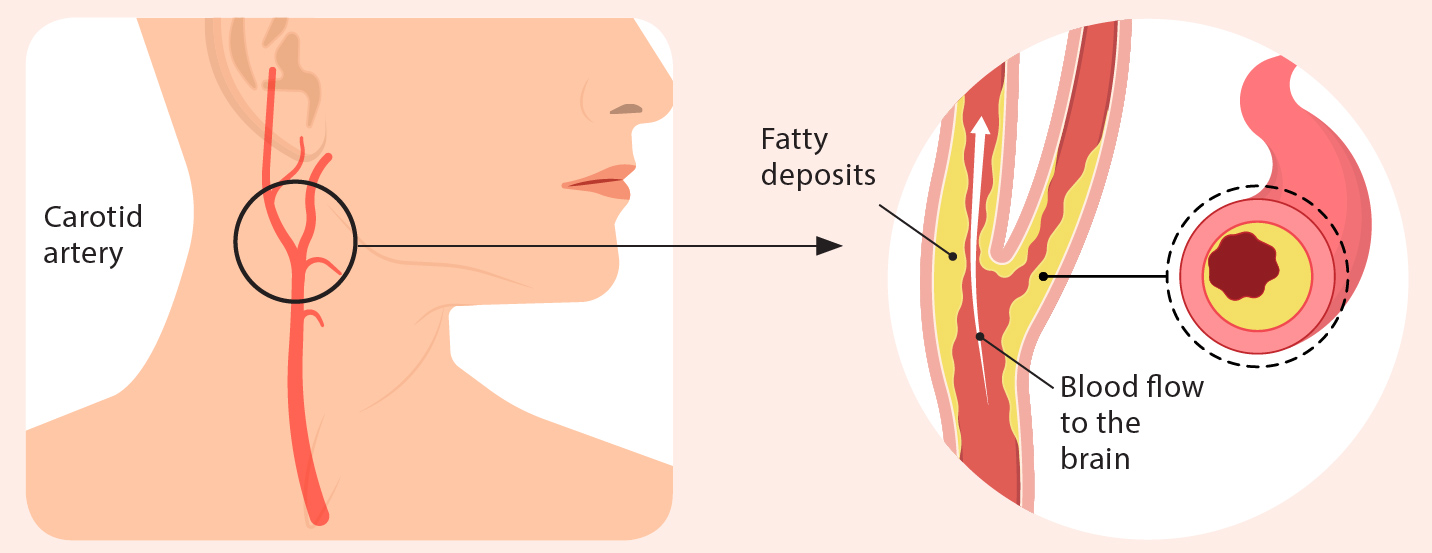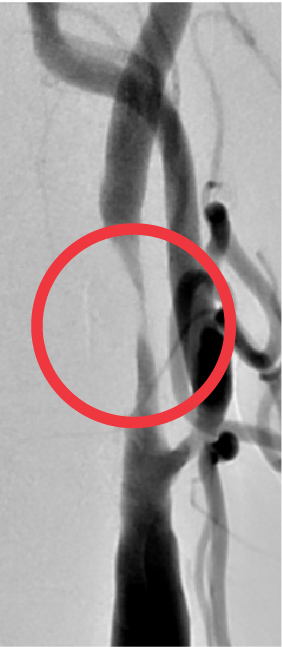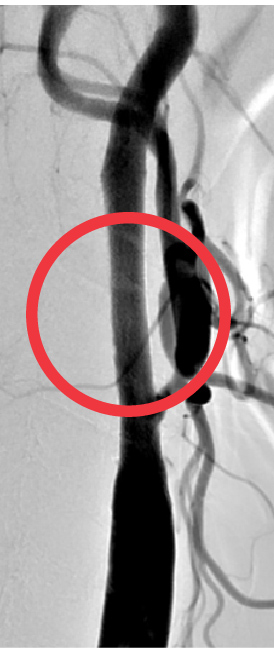(Left to right) Dr Wickly Lee, Senior Consultant, Neuroradiology, and Co-Director, Endovascular Centre, NNI, performing carotid stenting with Dr Kee Tze Phei and Dr Julian Han.
Narrowed arteries in the neck reduce blood supply to the brain and can potentially cause stroke. Dr Carol Tham, Consultant, Neurology, NNI, explains why this occurs and how it can be detected.
The brain needs a constant blood supply so it can receive oxygen and nutrients. There are two major blood vessels on either side of the neck, known as the carotid arteries, which play a very important role in this.
Certain risk factors, such as high blood pressure, diabetes, high cholesterol levels, and smoking can cause fatty deposits (plaque) to be laid down along the inner walls of these arteries. Over time, the inside of the arteries narrow, causing a reduction in blood flow to the brain. This can lead to strokes if the carotid artery becomes fully blocked, or if a piece of the fatty deposit breaks off and blocks a smaller artery in the brain.

An ultrasound scan of the carotid arteries can assess how well the blood flows, detect fatty deposits, and measure how much the arteries have narrowed. Doctors use this information when advising patients on the best course of treatment, which can range from healthy lifestyle changes and medication to open surgery or angioplasty and stenting.

Severe narrowing of the carotid artery caused by fatty deposits | 
Blood flow has improved after angioplasty and stenting |
Unblocking narrowed catorid arteries
Healthy lifestyle changes and medications are the first line of treatment to prevent further build-up of fatty deposits in the carotid arteries. If the narrowing continues to get worse or cause symptoms, a procedure may be needed to open up the arteries to restore blood flow to the brain, and prevent stroke.
There are two ways this can be done:
1. Angioplasty and stenting:

2. Open surgery (carotid endarterectomy)

All procedures have benefits and risks. The specialist will share these when discussing potential treatment options with patients and advise on the best approach based on factors such as the severity of the blockage, its anatomical details, and other health conditions the patient may have.
This article was published in the National Neuroscience Institute's NeusLink magazine, which covers articles about NNI updates and brain, spine, muscle and nerve conditions in English and Chinese - to read more articles click here!
